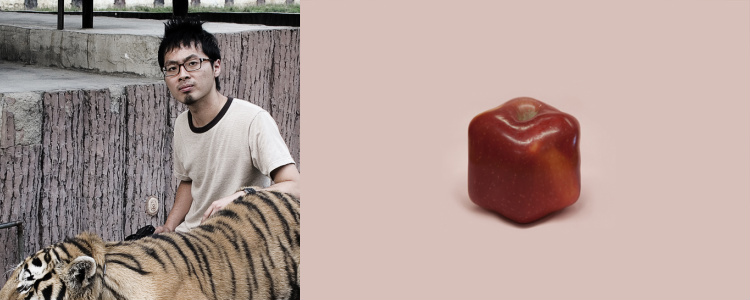As the guest artist for Asymptote’s summer issue, Singaporean visual artist Robert Zhao Renhui contributed our cover image and illustrated 15 texts in the Fiction, Nonfiction, Drama, and Latin American Fiction Feature sections. I interview him about this experience, as well as the relationship between image and text in his art practice.
I’ve been following your trajectory for quite a few years, but it’s safe to say that the Asymptote summer issue is presenting your work to an audience that is largely unfamiliar with your practice. How would you explain your art, and the Institute of Critical Zoologists, to our readers?
I am interested in both photography and nature, so in my work, I use photography to investigate our dialogue with nature. The Institute of Critical Zoologists (ICZ) is an umbrella concept under which I create and present my work. The meaning of the ICZ takes shape with each of my projects and exhibitions, which create different realities and fictions.
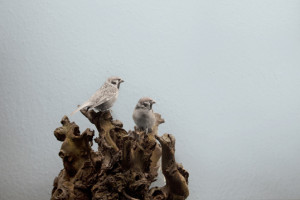
Could you describe the process of creating/selecting images for this issue?
There was a tension between choosing images that were too literal a representation of the text, and pictures that encapsulated a very personal connection to the text that regular readers may not get. My guiding principle was that my images should be in a jazz-like dialogue with the text, and occasionally surprise the viewer. I submitted a few pictures for each essay, leaving it up to the journal to do the final selection. In some cases, I didn’t know what was chosen until the issue was published.
Which text did you find the most interesting, and why?
I quite enjoyed “Life of a Mimic.” I like the idea of constantly mimicking and observing mimicry and in the end, to find a replica of yourself.
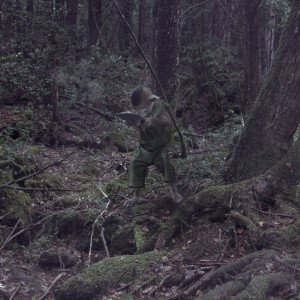
Your work is very much dependent on the narratives that you build around your images. Even though a lot of your work is framed with scientific rhetoric, I feel that there’s something very literary and lyrical about it. Could you talk a little about your attraction to storytelling?
A long time ago, I was reading John Berger’s Ways of Seeing where he showed a bland image without any copy. He showed the image again on the next page with a text saying that the image was the last photograph that a photographer took before he died. That immediately changed my whole experience of the image and this way of framing a work, of giving it a context, has shaped the way I work.
Sometimes people ask me how to explain the truths beyond my fictions (which I do), but they don’t realise that I may just be delivering another fiction to them, one that they wanted to hear.
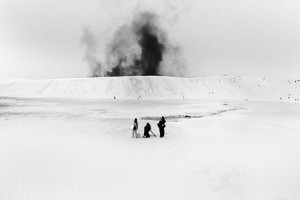
In pairing images with text, one has to be very careful about balancing the mysterious and the matter-of-fact. How do you handle the image-text relationship in your practice?
In my work, I use a lot of text and I try my best to let the audience have a space to enter where he can make sense of what is being presented to him. I try not to present a fiction that is too believable because despite all appearances, I am not trying to deceive people. What I am trying to do is to create a symbiotic relationship between the image and text where the reader bounces off the text and the image and try to find a space where he make sense of what is being presented to him. My texts are really generic; if you read them against the images, you will realise they do not really illustrate what is being written. It’s important that the text does not try to make you believe that the image is trying to tell you what is being written, but you can still feel your way in the image, to make out your own meanings.
Although the narratives accompanying your images are usually very specific, you were very willing to surrender your work to the texts in our issue, to the point of allowing me curatorial leeway to rearrange some of the pairings that you proposed. Why are you comfortable with this “recontextualisation” of your work?
Part of my work is all about the failing—and fun—times one has trying to contextualise an image. That’s why I’m very open to people telling new stories about it.
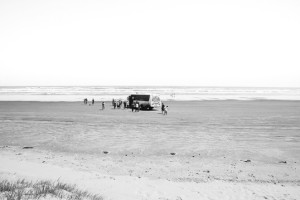
Lastly, would you be able to share any projects that you’re working on at the moment?
I’ve been climbing up Banyan Trees around Singapore and also stayed in some of them for a few days. It wasn’t really pleasant but the time spent in the trees forces you to experience the tree a bit differently and to get to know them well. Banyan trees are these uncontrollable trees that just grow bigger and bigger, destroying everything with its aerial roots. I managed to find a tree that devoured a shrine dating back to the 1950s—now the edifice is hardly visible from the outside of the tree. The tree also embodies what nature is really about: an unmanageable force. Nature in Singapore is pretty much about the management and taming of its wildness. I’ve also been filming the transplanting of a banyan tree at The Substation (a contemporary art centre in Singapore) and watched some of the other trees get destroyed. Some of these tree parts I’ve salvaged, and I also collected the insects on the logs for an exhibition next year at The Substation for its 25th anniversary.
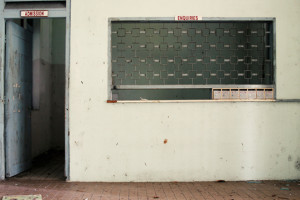
*****
Radhika Menon’s deep interest in children and their reading inspired her to set up Tulika Publishers in 1996. Today, books from Tulika, being published in nine different Indian languages—English, Hindi, Tamil, Malayalam, Telugu, Kannada, Marathi, Gujarati and Bangla—are regarded as the benchmark in children’s publishing in India. She passionately believes that translating across different languages gives voice and image to cultural diversity in a way that publishing in just one language does not—a philosophy that now defines Tulika. A hands-on publisher, she is closely involved with the visualizing, editing, designing and marketing of the books.
Berny Tan is Asymptote’s Chief Executive Assistant. She was born and raised in Singapore, and graduated with a B.F.A. in Visual & Critical Studies from the School of Visual Arts in New York (2014). She is navigating her potential roles as artist, writer, designer, and curator, and has worked at art institutions in both New York and Singapore. Her artwork explores the interweaving of the systematic visual language of diagrams with a deep, emotional introspection, and her writing has been published in Ceriph. She is one half of the data visualization project Isle-to-Isle, which takes a diagrammatic approach to reading Jules Verne’s The Mysterious Island.

